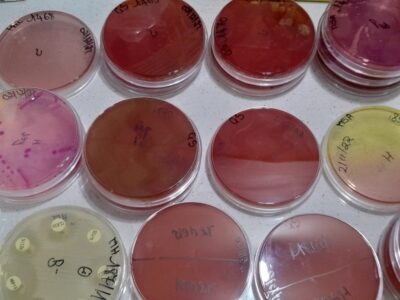Main content
In 1967 I was invited to attend the first national congress of the Indonesian Pediatric Society in Semarang. There I was told that during the Second World War Indonesian doctors in remote areas and Dutch doctors in the Japanese camps, where no other supplies were available, used coconut water for intravenous therapy. Indonesian doctors educated at the Nederlands Indische Artsen School (NIAS) in Surabaya learned about this before the war. I was intrigued and brought one young coconut home and got two other ones through the Indonesian Embassy in The Hague. We analysed the chemical composition of the coconut water in our research laboratory and compared it with blood plasma, Oral Rehydration Solution (ORS) and sodium chloride intravenous fluid (NaCl) (Table 1; I,II,III). We did not publish the results, but hereby we would like to report on it as a historical note.

Discussion
At that time we were only aware of the first international publication on the use of coconut water for intravenous therapy, of 1942 by a Cuban group, treating 12 children [1]. In 1954 Eiseman et al. reported their clinical experience with intravenous administration of coconut water in 157 patients in surgical wards in Bangkok, Honduras and St Louis (USA) [2][3]. Campbell-Falck et al. described the successful use of coconut water as a short-term intravenous hydration fluid for a patient in a distant Solomon Island where no standard intravenous fluids were available [4]. A few other reports on this subject were published in African and Asian Medical Journals [5][6][7][8]. Coconut water contains a number of vitamins, trace elements, essential aminoacids, fatty acids and sugars [9][10]. Young coconut juice is now advertised as a sports drink and health food [11]. The composition of coconut water changes during the development of the fruit. Young (green) coconuts contain 500-1000 ml of fluid. The electrolyte composition of coconut water differs considerably from blood plasma and better resembles intracellular fluid. Sodium and chloride concentrations are low, concentrations of calcium, magnesium and particularly potassium are high. The solution is hypotonic and the pH is low, compared with blood plasma. The osmolarity is high because of the sugars, glucose, fructose, sucrose and others. Only minor adverse reactions have been reported in the clinical studies [1][2][3][7].
Coconut water has also been used as an oral rehydration fluid in children with gastroenteritis, but there is no consensus about its effectivity for this indication [12][13][14][15]. The conventional ORS developed by the World Health Organization (WHO) has a much higher sodium, chloride and glucose content. Kuberski et al. think that coconut water with the addition of table salt can be used for the oral rehydration of patients with severe gastroenteritis when conventional fluids are not available [12]. Msengi et al. stopped a controlled clinical trial and found coconut fluid not suitable for rehydration in patients with diarrhea [13]. Adams and Bratt studied twenty young children with acute gastroenteritis and no clinical evidence of dehydration. The children were randomly selected to receive young green coconut water and the WHO ORS solution. There were no significant differences in outcome between the two groups. The authors suggest that coconut water can be used in well-nourished children with mild acute diarrhea without signs of dehydration [14]. It should not be used in patients with dehydration, as in severe cholera. Fagundes Neto et al. found the sodium and glucose concentrations too low for an oral rehydration solution [15].
Conclusions
It is obvious that coconut water is not an ideal solution for intravenous use, but it can be used in urgent situations when no other supplies are available. In such situations it can also be used as an oral rehydration fluid, but only in children with mild acute diarrhea without signs of dehydration.

I, II, III author’s analyses in 1967; (1), (3), (5), (7), (9), (14) see references.
meq/L: milliequivalent per liter, µeq/L: microequivalent per liter, g/L: gram per liter, mosm/L: milliosmol per liter
Acknowledgment
I thank Dr HJ Degenhart, professor emeritus of chemical paediatric endocrinology for the analyses in 1967.
References
- Pradera ES, Fernandez E, Calderin O. Coconut water: a clinical and experimental study. Am J Dis Child 1942; 64:977-95.
- Eiseman B, Lozano RE, Hager T. Clinical experience in intravenous administration of coconut water. AMA Arch Surg 1954; 69:87-93.
- Eiseman B. Intravenous infusion of coconut water. AMA Arch Surg 1954; 68: 167-78.
- Campbell-Falck D, Thomas T, Falck TM et al. The intravenous use of coconut water. Am J Emerg Med 2000; 18:108-11.
- Ranti ISF, Kwee Tien Boh, Thio In Liang et al. Paediatr Indones 1965; 5:suppl 782-92.
- Acharya VN, Gupta KC, Golwala AF et al. Comparative study of intravenous use of natural coconut water, synthetic coconut water and glucose saline in acute gastro-enteritis. Ind J Med Res 1965; 53:1069-73.
- Olurin EO, Durowoju JEO, Bassir O. Intravenous coconut water therapy in surgical-practice. West Afr Med J 1972; 5:124-31.
- Rao PS, Rao SR, Kumar SV et al. Intravenous administration of coconut water. J Assoc Phys India 1972; 3:235-9.
- Petroianu GA, Kosanovic M, Shehatta IS et al. Green coconut water for intravenous use: trace and minor element content. J Trace Elements in Exp Med 2004; 17:273-82.
- Yong JWH, Ge L, Ng Yan Fei et al. The chemical composition and biological properties of coconut (Cocos nucifera L.) water. Molecules 2009; 14:5144-64.
- www.livestrong.com/article/310667-health-advantages.
- Kuberski T, Roberts A, Linehan B et al. Coconut water as a rehydration fluid. NZ Med J 1979; 90:98-100.
- Msengi AE, Mbise RL, Msuya PM et al. The biochemistry of water from unripe coconuts obtained from two localities in Tanzania. East Afr Med J 1985; 62: 725-9. Msengi AE. What ‘s in an unripe coconut? Lancet 1986;328: 50.
- Adams W, Bratt DE. Young coconut water for home rehydration in children with mild gastroenteritis. Trop Geogr Med 1992; 44:149-53.
- Fagundes Neto U, Franco L, Tabacow K et al. Negative findings for use of coconut water as an oral rehydration solution in childhood diarrhea. J Am Coll Nutr 1993; 12:190-3.



















































